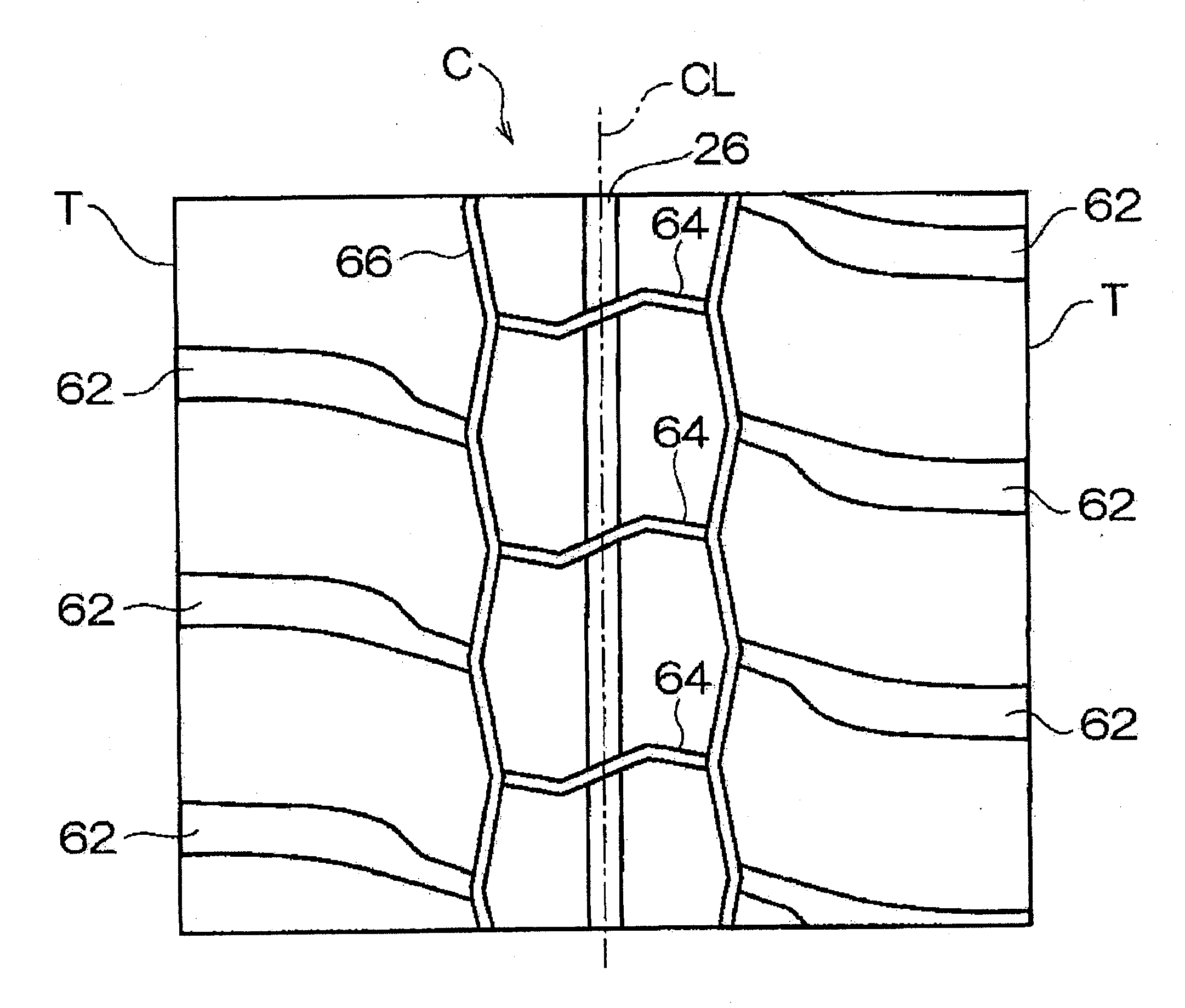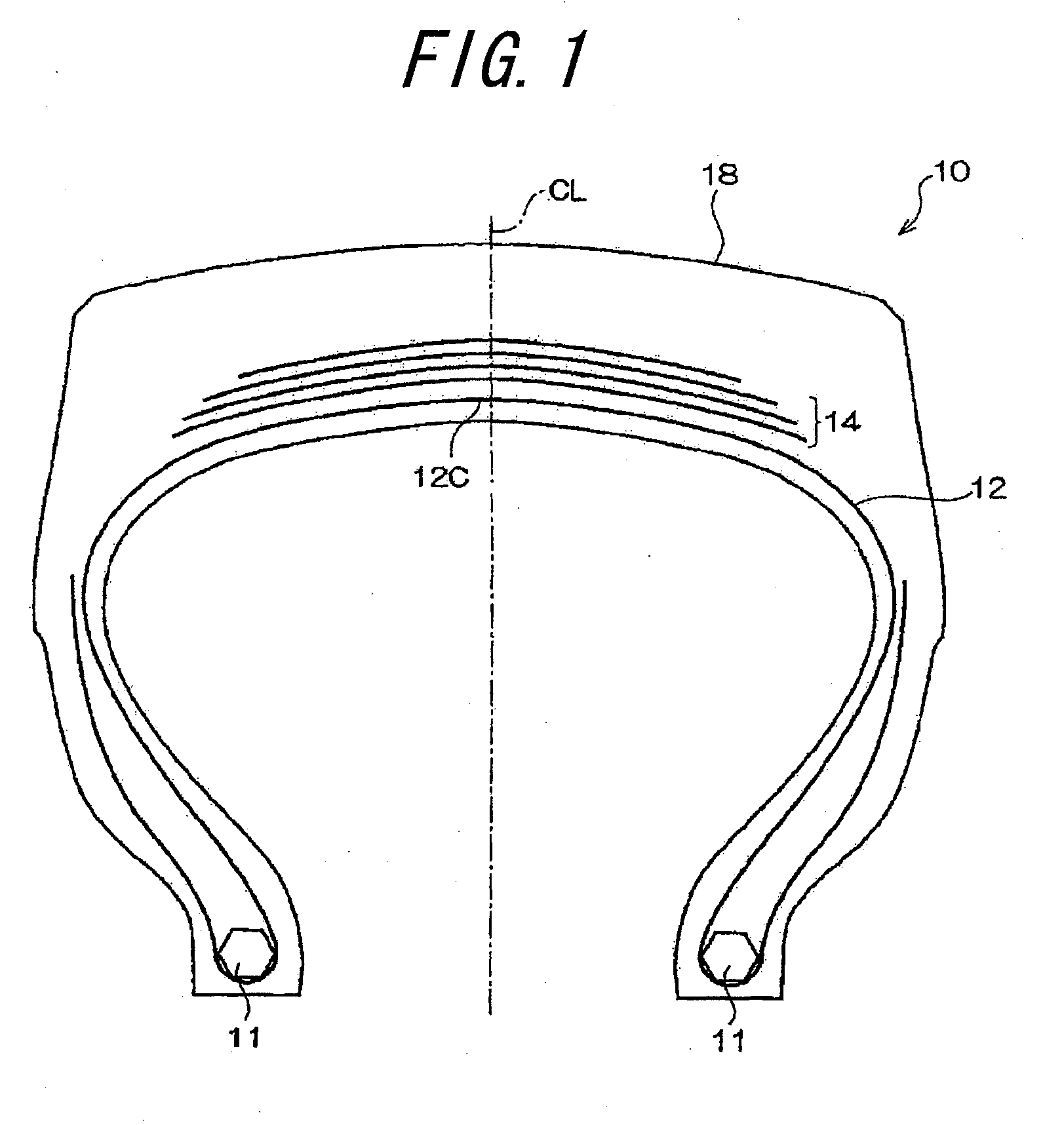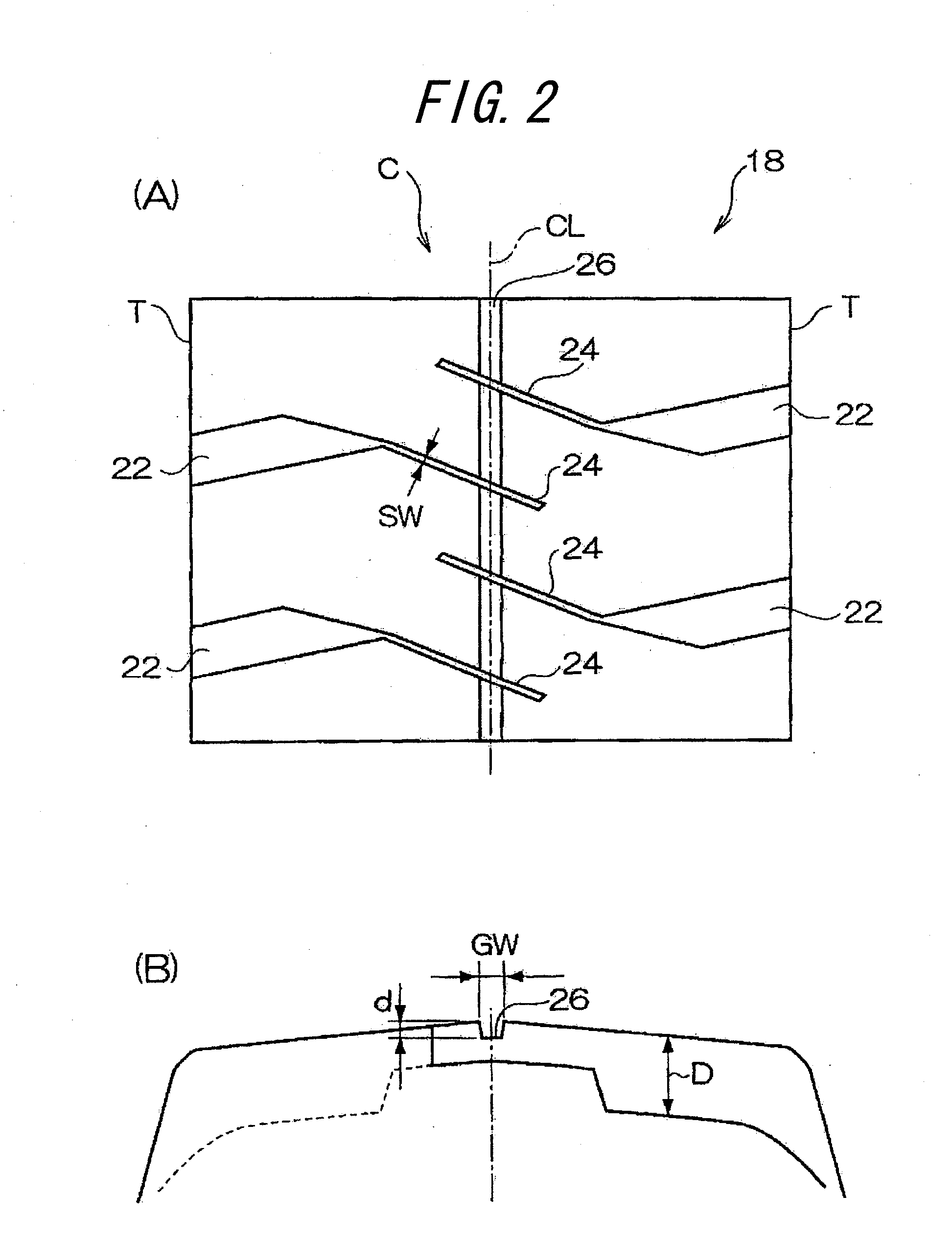Tire for construction vehicle
a technology for construction vehicles and tires, applied in the direction of heavy-duty vehicles, vehicle components, non-skid devices, etc., can solve the problems of increased risk, increased risk, and increased risk of tire damage, and achieve the effect of enhancing the heat-radiation characteristic of the tire center portion and suppressing the tire troubl
- Summary
- Abstract
- Description
- Claims
- Application Information
AI Technical Summary
Benefits of technology
Problems solved by technology
Method used
Image
Examples
first embodiment
[0042]First, the first embodiment will be discussed. As shown in FIGS. 1 and 2, a tire 10 for a construction vehicle according to the present embodiment has a carcass 12 of which both end portions are turned around bead cores 11. The carcass 12 is composed of one or more ply layers.
[0043]A belt layer 14 configured by laminating a plurality of belt plies is embedded outside of a crown portion 12C of the carcass 12 in the radial direction of the tire, and a tread portion 18 provided with grooves is formed outside of the belt layer 14 in the radial direction of the tire. A rubber having given characteristics is used as a rubber constituting the tread rubber.
[0044]A plurality of lug grooves 22 are disposed in tread shoulder regions which is the both sides in the width direction of the tire.
[0045]In addition, a plurality of widthwise-extending narrow grooves 24 extending generally along the width direction of the tire are disposed in the tire center portion C. The widthwise-extending nar...
second embodiment
[0053]In the next, the second embodiment will be discussed. In a tire for a construction vehicle according to the present embodiment, widthwise-extending narrow grooves 34 instead of the widthwise narrow grooves 24 of the first embodiment are formed in the tread portion 28, as shown in FIG. 3.
[0054]The widthwise-extending grooves 34 are displaced in the tire center portion C generally along the width direction of the tire. The widthwise-extending narrow grooves 34 pass across the equatorial shallow groove 26, and both of their ends locate in the tread and do not connect with the lug grooves 22.
[0055]Such configuration may provide a tire for a construction vehicle useful for users demanding a large traction force which may cause a crack if the widthwise-extending narrow grooves are adopted to be connected to the lug grooves in the same manner as the first embodiment since deformations of the widthwise-extending narrow grooves and the lug grooves traction forces differs with each othe...
third embodiment
[0056]In the next, the third embodiment will be discussed. In a tire for a construction vehicle according to the present embodiment, two non-equatorial narrow grooves 46 extending in the circumferential direction of the tire are disposed along two lines connecting terminal ends of the lug grooves 22 in the circumferential direction of the tire, as shown in FIG. 4, in addition to the first embodiment. The groove depth of the non-equatorial narrow groove 46 is within a range from 10% to 25% of the groove depth of the lug groove 22. Both ends of the widthwise-extending narrow groove 34 is connected to the non-equatorial narrow groove 46.
[0057]This embodiment may avoid sideslips and degradation of the rigidity in the width direction.
PUM
 Login to View More
Login to View More Abstract
Description
Claims
Application Information
 Login to View More
Login to View More - R&D
- Intellectual Property
- Life Sciences
- Materials
- Tech Scout
- Unparalleled Data Quality
- Higher Quality Content
- 60% Fewer Hallucinations
Browse by: Latest US Patents, China's latest patents, Technical Efficacy Thesaurus, Application Domain, Technology Topic, Popular Technical Reports.
© 2025 PatSnap. All rights reserved.Legal|Privacy policy|Modern Slavery Act Transparency Statement|Sitemap|About US| Contact US: help@patsnap.com



